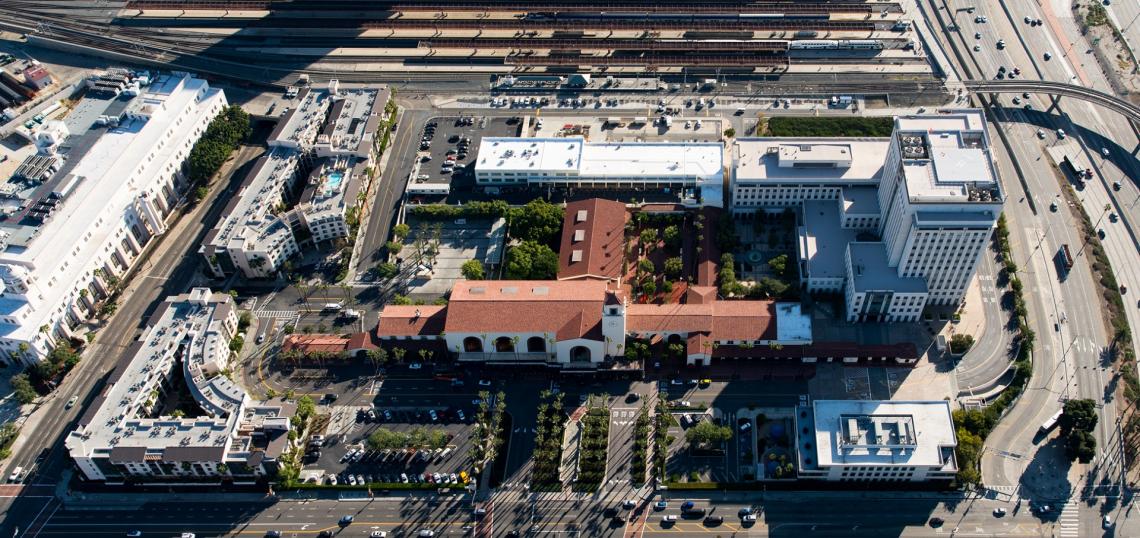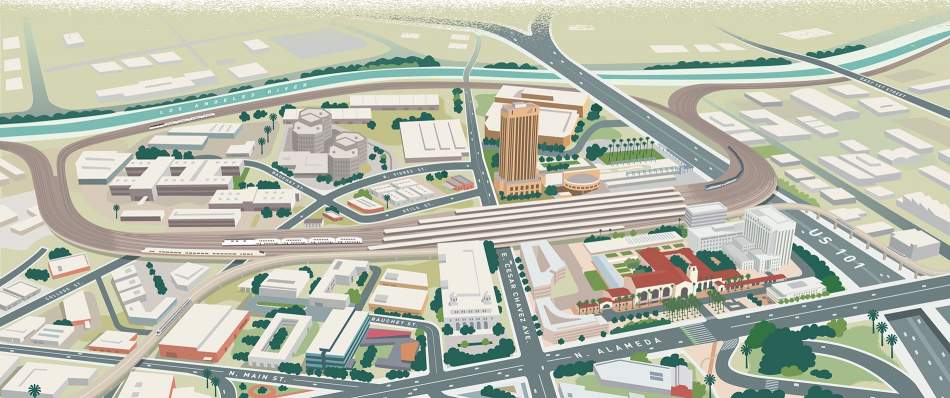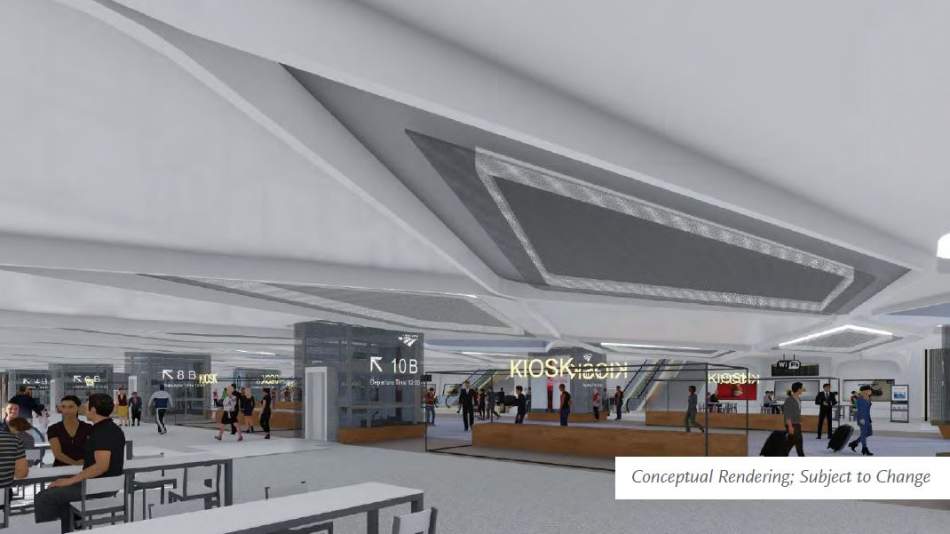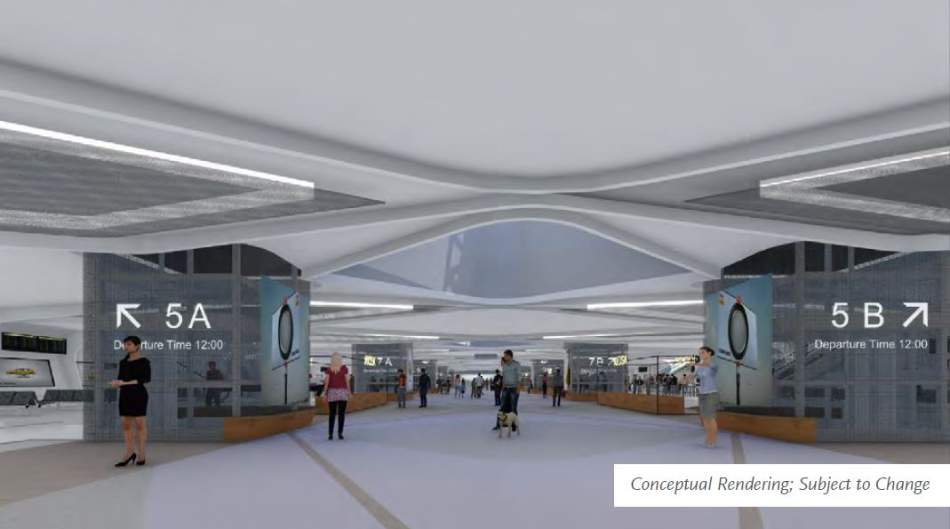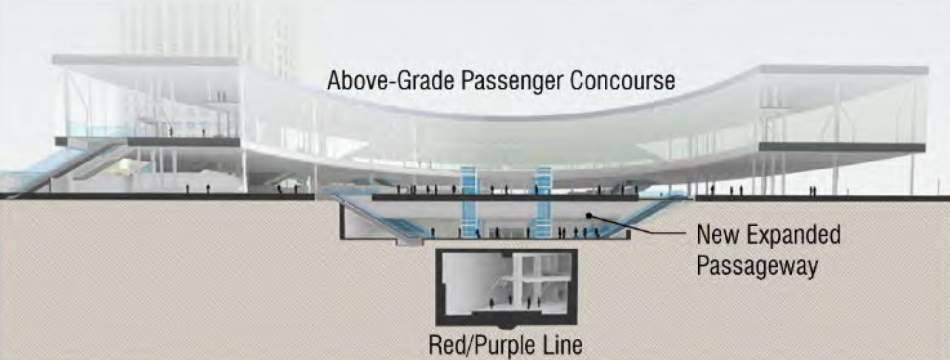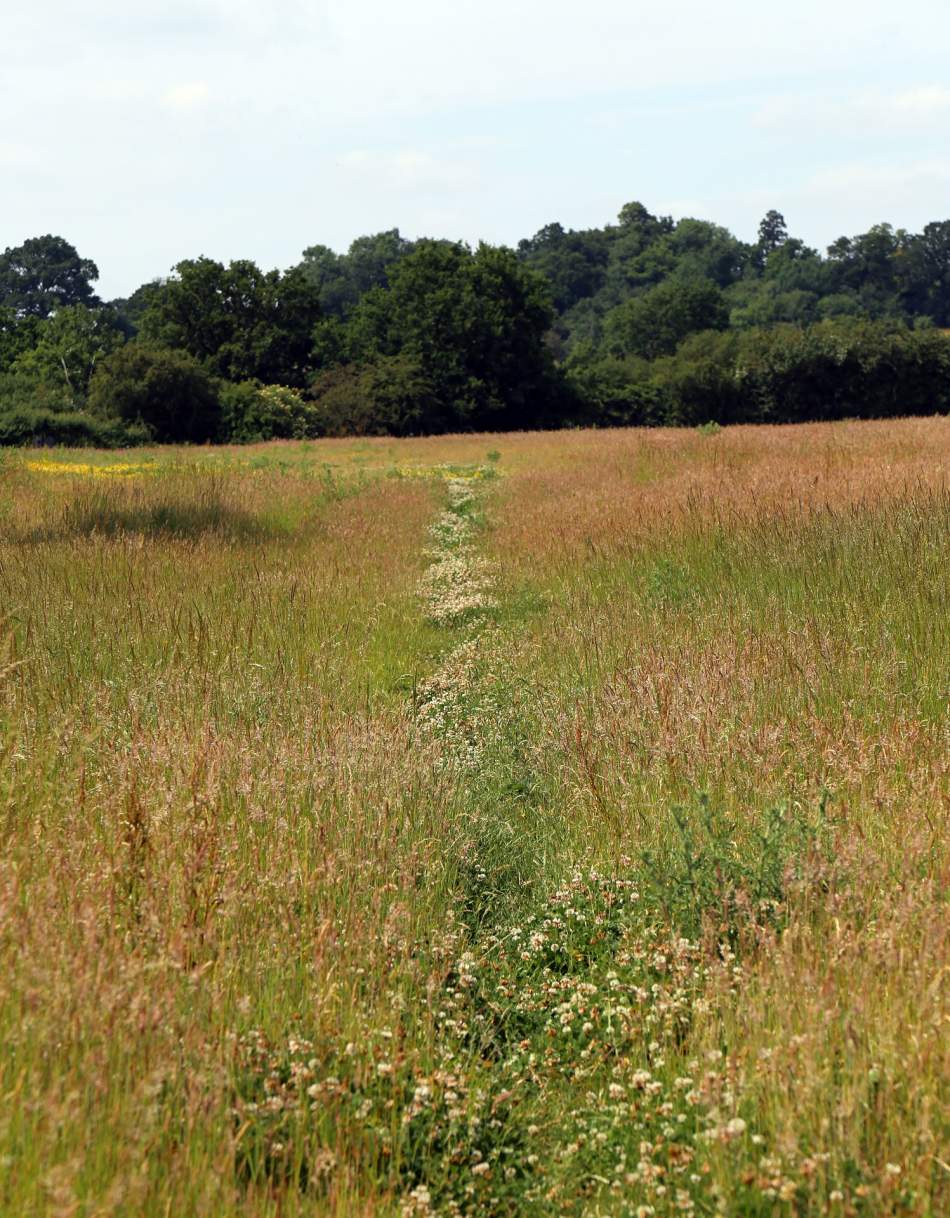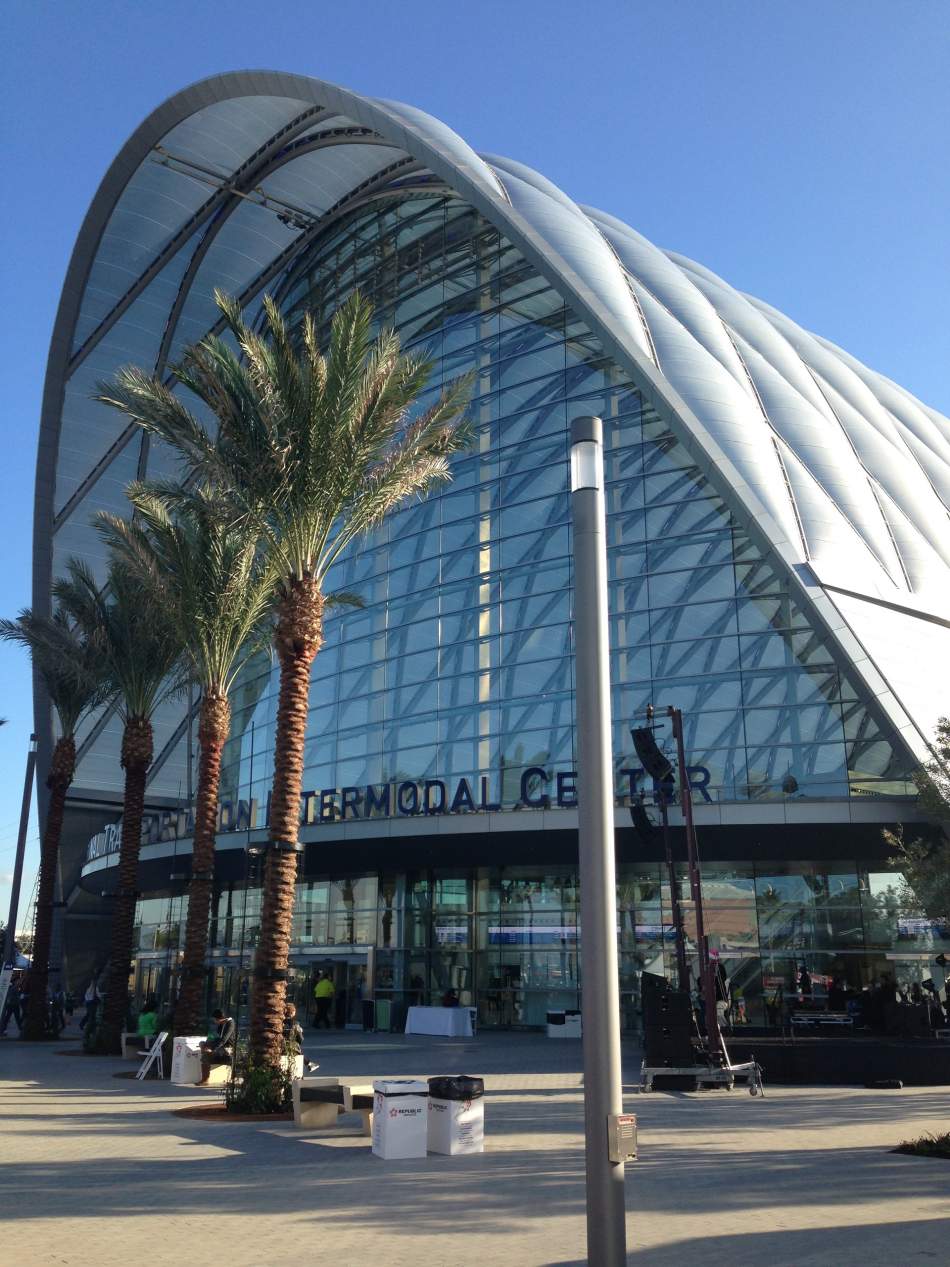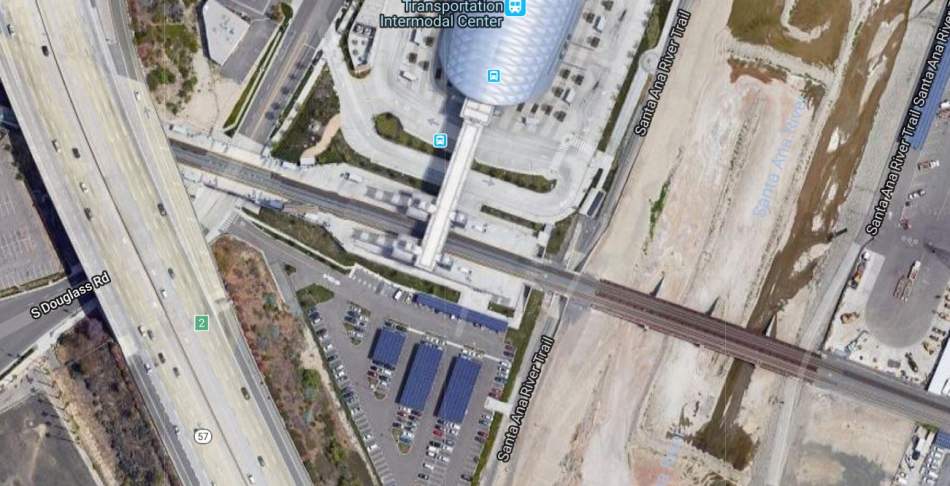Since taking ownership of Union Station in 2011, Metro has invested heavily to upgrade the historic rail terminal for transit users and tourists alike. The transportation agency is now in the planning stages for its latest capital improvements project, one which carries a multi-billion dollar price tag.
The project, named Link U.S., calls for the construction of run-through tracks above the 101 Freeway trench that will allow trains to enter and exit the Union Station rail yard from both the north and south. Metro officials have estimated that the project would allow for a 63 percent increase in passenger rail service at Union Station by the year 2040 - upping the number of daily Amtrak and Metrolink trains from 172 to 280, and the number of daily passengers from 110,000 to 200,000 within the same timeframe.
To accommodate those thousands of anticipated new transit riders, the Link U.S. project comes with a second component - a new passenger concourse. Up until two years ago, the proposed passenger concourse was conceived as an expansion of an existing pedestrian tunnel that runs east-to-west below the Union Station rail yard. Under this concept, the 28-foot-wide passageway would be widened into a more commodious space featuring retail and other amenities. As the construction of the run-through tracks will require raising the Union Station rail yard, the at-grade concourse has been pitched as an opportunity to "kill two birds with one stone."
However, amid concerns of ballooning cost estimates for Link U.S., the Metro Board took up consideration of a second alternative in 2017: an above-grade concourse. Instead of expanding the existing tunnel, this alternative calls for an entirely new concourse that would hover atop the rail yard. Renderings depict a donut-shaped structure that resembles a cross between an airport terminal and the Cupertino headquarters of Apple.
The cost savings of an above-grade concourse versus an at-grade concourse are significant - approximately $500 million - but that smaller price tag would come at the expense of usability. Since its unveiling two years ago, the proposed above-grade concourse has been widely panned by Los Angeles-area transit advocates. The crux of their objections is passenger circulation, as neatly summarized by L.A. Podcast co-host Scott Frazier:
“Aside from financial considerations, the above-grade option would have significant impacts on transit riders and other visitors to the station. The diagram depicts a massive structure that would hamper movement between the East Plaza and Historic Union Station, requiring passengers to ascend and descend to get from one side to the other. It would also contribute to an already-existing problem of vertical circulation at Union Station."
These critiques seem to have gotten Metro's attention. In the draft environmental impact report for the Link U.S. project, which was published last week, Metro introduced a revised plan which still calls for building an above-grade concourse, but also for expanding the pedestrian tunnel.
Under this revised alternative, the above-grade concourse would provide waiting areas, ancillary support functions, transit-serving retail, offices, open spaces, and terraces, while the expanded passageway would "provide additional passenger travel-path convenience and options." While it’s difficult to draw conclusions from this vague project description, a pair of conceptual renderings depict the expanded tunnel with seating areas, kiosks, and vertical circulation elements - all of which are features that one might expect to find when waiting for a train.
It seems that in order to mitigate the impracticalities posed by an above-grade passenger concourse, Metro now intends to couple it with a watered-down version of the at-grade concourse.
The fact that Metro has tacitly acknowledged the necessity of maintaining - and expanding - the existing tunnel raises an important question: is the above-grade concourse necessary? Could this modest version of the at-grade concourse adequately serve our future needs at a lower cost?
Human beings instinctively seek out the shortest, most convenient route to their destination. This is seen in nature in the form of "desire paths," and would likely be borne out at Union Station should Metro build both the expanded passageway and the above-grade concourse. Most people traveling through Union Station are transferring between different transit lines rather than arriving at their end destination. Logically, those people will seek out the most direct path to their bus or train, which would mean utilizing the passageway and foregoing a more circuitous trip through the concourse.
One need not look far to see this situation playing out in real life. In Orange County, the $185-million Anaheim Regional Transportation Intermodal Center - better known as ARTIC - is one of the most ambitious transit hubs built in the United States in recent memory. The arching, steel-framed building features a 120-foot-tall ticketing hall, punctuated with a grand staircase flanked by retail. But the despite its eye-catching exterior, ARTIC’s interior layout has been criticized as being "dysfunctional," with an inconveniently long distance between the main entrance and the station platforms at the back of the building. Not coincidentally, the main concourse of ARTIC is often devoid of people, as Metrolink and Amtrak passengers can more easily access the station platforms from a park-and-ride lot at the back of the property.
With the hope of relief from choking traffic congestion, Los Angeles County residents have voted twice since 2008 to tax themselves to fund new transportation infrastructure. Metro, which shoulders the burden of delivering dozens of new and expanded transit lines over the coming decades, has recently upped the stakes by setting a goal of completing 28 projects before the 2028 Summer Olympic Games.
The scope of work over the next 10 years has Metro scrambling to find a way to pay for its grandiose ambitions. To this end, a variety of innovative funding mechanisms - including congestion pricing - should be explored, but so should cost-saving measures. In that spirit, dropping consideration of an expensive above-grade concourse at Union Station in favor of a more modest at-grade concourse could be a win-win situation, creating a project that is more functional for Metro's customers at a more affordable price point.
Metro’s stewardship has transformed Union Station for the better over the past eight years. It would be a mistake to invest in a passenger concourse that hinders the station’s growing role as a mobility hub for Los Angeles County.
The comment period for the Link U.S. draft environmental impact report is open through March 4. Here is how to give input.
- Union Station Archive (Urbanize LA)





